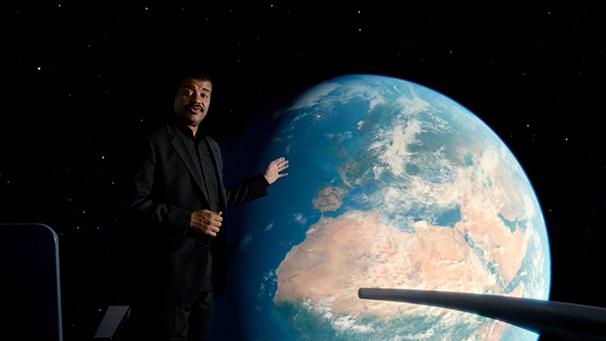
Over three decades ago, “Cosmos: A Personal Voyage,” hosted by the late Carl Sagan, inspired a new generation of scientific minds. Hosted by Sagan’s colleague and personal friend, astrophysicist Neil deGrasse Tyson, the highly anticipated follow-up, “Cosmos: A Spacetime Odyssey,” returned to primetime on Fox with an ambitious attempt to touch the hearts of young scientists again. The monumental event was certainly deserving of its introduction, given by President Barack Obama himself.
Noted for bringing hard science to the public through the use of innovative storytelling techniques, the first rendition of “Cosmos” was an adventure that resonated with the public and left an impact on the American consciousness.
In a world where theories are thrown back and forth and arguments are launched over the smallest pieces of information, “Cosmos” stays true to its predecessor with its commitment to the facts. With gravitas and charisma, Neil deGrasse Tyson takes us through a tour of our solar system in a straightforward, matter-of-fact fashion.
But “Cosmos” is nothing like your average middle school field trip to the science museum. Building on the strengths of the original series, the show immediately awes with gorgeous visual effects in its opening segment, revealing the Earth’s “cosmic address,” which refers to our specific location in the universe.
The viewers tag along with Tyson as he zooms farther and farther away from the Earth, revealing the planet’s location in relation to other cosmic entities. The series’ extravagant displays take full advantage of modern cinematic technology and bombard the audience with a stunning visual conceptualization of Tyson’s lessons.
“A Spacetime Odyssey” also makes numerous references to its predecessor. The “cosmic calendar,” which condenses the history of the universe into one year, is a segment that viewers will probably remember from the original “Cosmos.” The nifty device reveals that Jesus was born just five seconds ago on the calendar.
However, the series also features some new material tailored for a 21st-century audience. Tyson addresses the multiverse theory, an idea initially labeled as pseudoscience that is increasingly gaining traction as another vital key to unlocking the universe’s mysteries.
The series premiere then launched into a charming animated sequence about Giordano Bruno, an Italian philosopher and mathematician who posited that the sun and universe are just a small piece of millions of other solar systems in the infinite universe. With Bruno voiced by Seth MacFarlane, the segment was a fun, fresh way to present a familiar story.
Finally, the premiere ended with Tyson’s poignant speech about Sagan, his mentor and friend. He touched on Sagan’s legacy in modern science and astronomy and recounted the close relationship the two had, including the touching tale about how Sagan helped a 17-year-old Tyson. The anecdote was the perfect ending to a very strong premiere, as Tyson reflected on his own inspiration to follow in Sagan’s footsteps.
“I already knew that I wanted to become a scientist,” he said. “But that afternoon I learned from Carl the kind of person I wanted to become.”
With “Gravity” and “Big Bang Theory” cemented in the mainstream consciousness, science is making a comeback. With Fox’s outstanding 13-episode series “A Spacetime Odyssey,” it is clear that it is here to stay.
A version of this article appeared in the March 11 print edition. Bob Teoh is entertainment editor. Email him at [email protected].






















































































































































